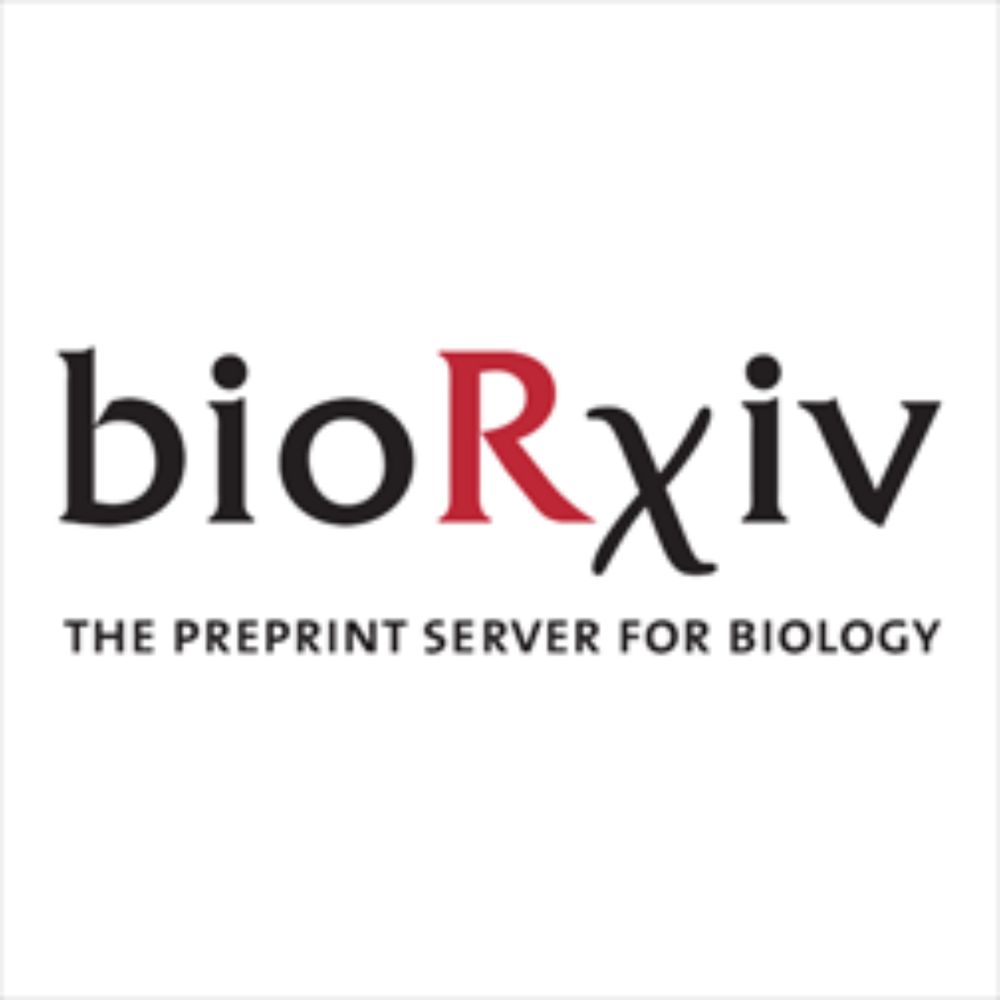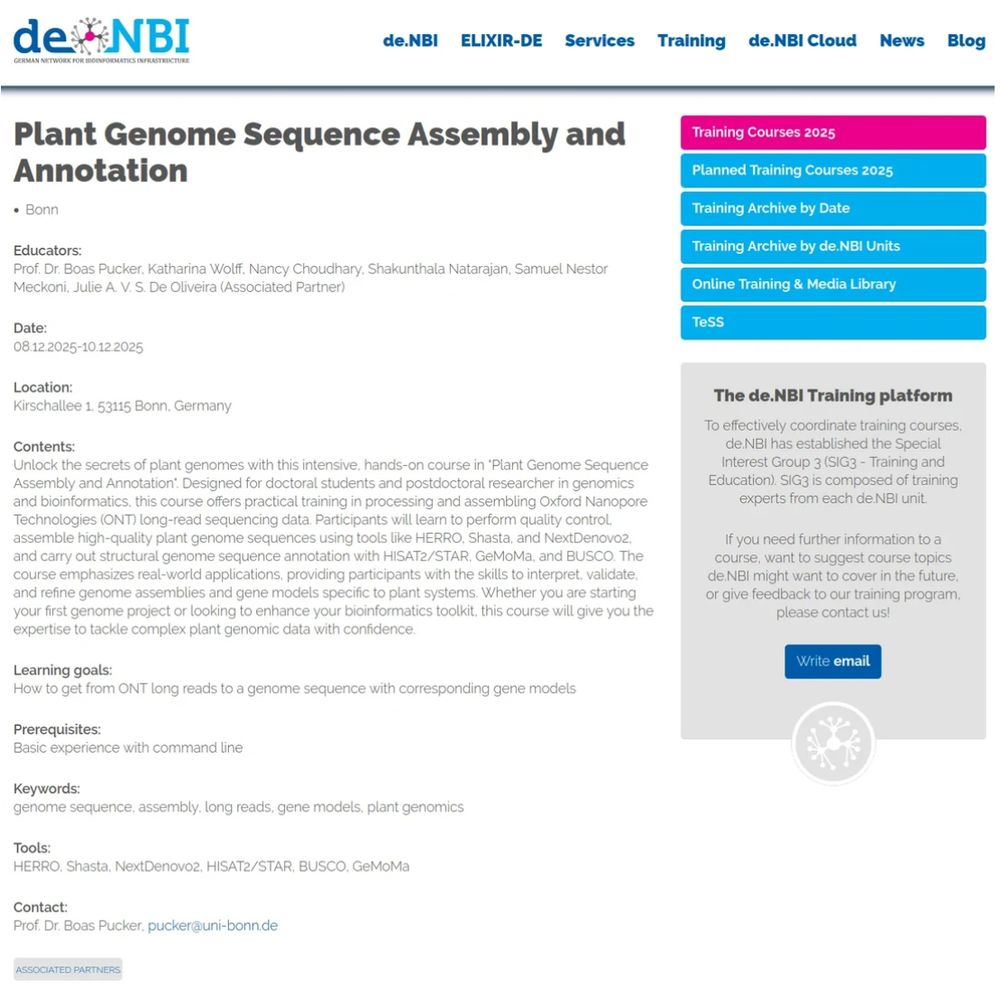doi.org/10.1101/2025...
KIPEs3: Automatic annotation of biosynthesis pathways
doi.org/10.1101/2022...
#Bioinformatics #Enzymes

doi.org/10.1101/2025...
KIPEs3: Automatic annotation of biosynthesis pathways
doi.org/10.1101/2022...
#Bioinformatics #Enzymes
doi.org/10.1101/2025...

doi.org/10.1101/2025...
doi.org/10.1101/2025...
DupyliCate - mining, classifying, and characterizing gene duplications
doi.org/10.1101/2025...
#Evolution #Bioinformatics

doi.org/10.1101/2025...
DupyliCate - mining, classifying, and characterizing gene duplications
doi.org/10.1101/2025...
#Evolution #Bioinformatics
Join our upcoming training courses to explore how plant genomes are assembled and annotated.
Details 👉 www.izmb.uni-bonn.de/en/pbb/news#...
#Genomics #Bioinformatics #DeNBI #PlantScience
@denbi.bsky.social @puckerlab.bsky.social

Join our upcoming training courses to explore how plant genomes are assembled and annotated.
Details 👉 www.izmb.uni-bonn.de/en/pbb/news#...
#Genomics #Bioinformatics #DeNBI #PlantScience
@denbi.bsky.social @puckerlab.bsky.social
doi.org/10.1101/2025...
DupyliCate - mining, classifying, and characterizing gene duplications
doi.org/10.1101/2025...
#Genomics #Bioinformatics #Evolution

doi.org/10.1101/2025...
DupyliCate - mining, classifying, and characterizing gene duplications
doi.org/10.1101/2025...
#Genomics #Bioinformatics #Evolution
doi.org/10.1101/2025...
Large scale genomic rearrangements in selected Arabidopsis thaliana T-DNA lines are caused by T-DNA insertion mutagenesis
doi.org/10.1101/2021...

doi.org/10.1101/2025...
Large scale genomic rearrangements in selected Arabidopsis thaliana T-DNA lines are caused by T-DNA insertion mutagenesis
doi.org/10.1101/2021...
doi.org/10.1101/2025...
Genome sequence of the blue flowering Centaurea cyanus
doi.org/10.1101/2025...

doi.org/10.1101/2025...
Genome sequence of the blue flowering Centaurea cyanus
doi.org/10.1101/2025...
doi.org/10.1101/2025...
Mapping-by-sequencing reveals genomic regions associated with seed quality parameters in Brassica napus
doi.org/10.1101/2022...

doi.org/10.1101/2025...
Mapping-by-sequencing reveals genomic regions associated with seed quality parameters in Brassica napus
doi.org/10.1101/2022...
doi.org/10.1101/2025...
Comparison of read mapping and variant calling tools for the analysis of plant NGS data
doi.org/10.1101/2020...

doi.org/10.1101/2025...
Comparison of read mapping and variant calling tools for the analysis of plant NGS data
doi.org/10.1101/2020...
doi.org/10.1101/2025...
Large scale genomic rearrangements in selected Arabidopsis thaliana T-DNA lines are caused by T-DNA insertion mutagenesis
doi.org/10.1101/2021...

doi.org/10.1101/2025...
Large scale genomic rearrangements in selected Arabidopsis thaliana T-DNA lines are caused by T-DNA insertion mutagenesis
doi.org/10.1101/2021...
We are sharing our ONT P2 Solo sequencing outputs per flowcell — explore our real data and experience here:
👉 www.izmb.uni-bonn.de/en/pbb/news#...
#Genomics #LongReads #PlantSci @puckerlab.bsky.social

We are sharing our ONT P2 Solo sequencing outputs per flowcell — explore our real data and experience here:
👉 www.izmb.uni-bonn.de/en/pbb/news#...
#Genomics #LongReads #PlantSci @puckerlab.bsky.social
Would love to supervise a team on flower design for the new art/design village 🎨🌹🧬
Would love to supervise a team on flower design for the new art/design village 🎨🌹🧬
doi.org/10.1101/2025...

doi.org/10.1101/2025...
doi.org/10.1101/2025...

doi.org/10.1101/2025...
doi.org/10.1101/2023...
Animal, fungi, and plant genome sequences harbour different non-canonical splice sites
doi.org/10.1101/616565

doi.org/10.1101/2023...
Animal, fungi, and plant genome sequences harbour different non-canonical splice sites
doi.org/10.1101/616565

doi.org/10.1101/2025...
Comparison of read mapping and variant calling tools for the analysis of plant NGS data
doi.org/10.1101/2020...

doi.org/10.1101/2025...
Comparison of read mapping and variant calling tools for the analysis of plant NGS data
doi.org/10.1101/2020...
doi.org/10.1101/2025...
Genetic factors explaining anthocyanin pigmentation differences
doi.org/10.1101/2023...
#PlantSci #Evolution

doi.org/10.1101/2025...
Genetic factors explaining anthocyanin pigmentation differences
doi.org/10.1101/2023...
#PlantSci #Evolution
doi.org/10.1101/2025...
Comparison of read mapping and variant calling tools for the analysis of plant NGS data
doi.org/10.1101/2020...
#Genomics #Bioinformatics

doi.org/10.1101/2025...
Comparison of read mapping and variant calling tools for the analysis of plant NGS data
doi.org/10.1101/2020...
#Genomics #Bioinformatics
doi.org/10.1101/2025...
NAVIP: Unraveling the Influence of Neighboring Small Sequence Variants on Functional Impact Prediction
doi.org/10.1101/596718
#Python #Bioinformatics

doi.org/10.1101/2025...
NAVIP: Unraveling the Influence of Neighboring Small Sequence Variants on Functional Impact Prediction
doi.org/10.1101/596718
#Python #Bioinformatics
doi.org/10.1101/2025...
KIPEs3: Automatic annotation of biosynthesis pathways
doi.org/10.1101/2022...
#FunctionalGenomics #PlantSci #Pangenomics

doi.org/10.1101/2025...
KIPEs3: Automatic annotation of biosynthesis pathways
doi.org/10.1101/2022...
#FunctionalGenomics #PlantSci #Pangenomics
doi.org/10.1101/2025...
Phylogenomics and metabolic engineering reveal a conserved gene cluster in Solanaceae plants for withanolide biosynthesis
doi.org/10.1101/2024...
#Genomics #PlantSci #PlantMetabolism

doi.org/10.1101/2025...
Phylogenomics and metabolic engineering reveal a conserved gene cluster in Solanaceae plants for withanolide biosynthesis
doi.org/10.1101/2024...
#Genomics #PlantSci #PlantMetabolism
I think I finally nailed it with this one.
I think I finally nailed it with this one.
Complexity welcome: Pangenome graphs for comprehensive population genomics
#pangenomes #plantscience #genomegraphs
www.cambridge.org/core/journal...

Complexity welcome: Pangenome graphs for comprehensive population genomics
#pangenomes #plantscience #genomegraphs
www.cambridge.org/core/journal...

